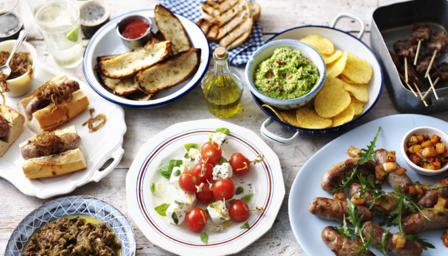Often eclipsed by the more coveted breast, the whole chicken leg—comprising both the drumstick and the thigh—is a true culinary chameleon. This often-overlooked cut boasts an unparalleled richness of flavor, a tender succulence, and a remarkable versatility that makes it a favorite among astute home cooks. Its higher fat content and presence of connective tissue, far from being drawbacks, contribute to a forgiving nature in cooking and a deeply satisfying mouthfeel. This exploration delves into the myriad ways to transform the humble whole chicken leg into a centerpiece, offering detailed cooking methodologies and insightful tips to elevate your gastronomic endeavors.

The Anatomy of Flavor: Why Whole Legs Excel
The inherent superiority of the whole chicken leg stems from its unique anatomical composition. Unlike the leaner breast meat, the leg is a dark meat cut, meaning it contains more myoglobin, a protein that carries oxygen and gives the meat its darker hue and richer, more pronounced flavor. Furthermore, the leg possesses a greater proportion of intramuscular fat and connective tissue. These elements, when subjected to heat, render down, basting the meat from within and contributing to its exquisite tenderness and moistness.
The Collagenous Conundrum and Its Delicious Resolution
The connective tissue, primarily collagen, is a key player in the leg’s textural triumph. When cooked slowly or at a moderate temperature, collagen converts into gelatin, imparting a luxurious, velvety texture and deepening the savory notes. This amelioration of tough fibers into succulent tenderness is what makes slow-roasting, braising, or stewing chicken legs particularly rewarding. The bone-in nature of the whole leg also contributes significantly; bones impart flavor and moisture to the surrounding meat during cooking, acting as internal heat conductors and basting agents. This results in a depth of flavor that boneless, skinless cuts simply cannot replicate.
Mastering the Metamorphosis: Cooking Techniques for Perfection
The versatility of the whole chicken leg allows for a wide array of cooking methods, each coaxing out different facets of its inherent deliciousness.
Crisp-Skinned Rhapsody: Roasting and Pan-Searing
For those who covet a golden, shatteringly crisp skin, roasting is an ideal method. Begin by patting the chicken legs thoroughly dry—moisture is the enemy of crisp skin. Season liberally with salt, pepper, and your preferred herbs or spices. Roasting at a higher temperature (around 200°C / 400°F) for an initial period helps to render the fat and achieve that coveted crispness, before potentially lowering the temperature to ensure even cooking through to the bone. A general guideline is 45-60 minutes, or until an internal temperature of 74°C (165°F) is reached in the thickest part of the thigh, away from the bone.
Pan-searing, followed by a finish in the oven or on the stovetop, also yields incredible results. Sear the legs skin-side down in a hot, oven-safe skillet until deeply golden and crisp, then flip and finish cooking. This method is particularly effective for developing a rich, flavorful fond (the browned bits at the bottom of the pan) which can then be used to create a quick pan sauce.
Balsamic Beguilement: Braising and Stewing
When time allows, braising chicken legs unlocks an unparalleled depth of flavor and tenderness. This technique involves searing the legs to develop color, then simmering them gently in a flavorful liquid (broth, wine, tomatoes, or a combination) in a covered pot. The low, slow heat allows the collagen to break down completely, resulting in meat that literally falls off the bone. Classic dishes like Coq au Vin, or simple chicken cacciatore, showcase the transformative power of braising. Similarly, adding whole chicken legs to hearty stews provides a robust protein component that stands up to prolonged simmering without drying out. The liquid absorbs all the rich flavors from the meat and bone, creating a deeply savory, nourishing meal.
The Confit Conundrum (Simplified)
While traditional confit involves submerging meat in its own fat, a simplified home version can approximate this luxurious texture. Slowly baking chicken legs in a small amount of oil or rendered fat, perhaps with garlic and herbs, at a very low temperature (around 135°C / 275°F) for an extended period (2-3 hours) yields incredibly tender, almost spreadable meat with a wonderfully crisp skin. This method epitomizes the leg’s forgiving nature.
Pro Tips for the Perfect Leg
- Pat Dry, Always: Regardless of the cooking method, ensure the chicken legs are thoroughly dry before seasoning and cooking. This promotes browning and crispness.
- Season Generously: The dark meat can handle robust seasoning. Don’t be shy with salt, pepper, herbs (rosemary, thyme, oregano), and spices (paprika, garlic powder, onion powder).
- Resting is Imperative: After cooking, allow the chicken legs to rest for 5-10 minutes before serving. This permits the juices to redistribute throughout the meat, resulting in a more succulent final product.
- Temperature Check: Always use a meat thermometer to ensure proper doneness. Insert it into the thickest part of the thigh, avoiding the bone.
The whole chicken leg is a culinary treasure, offering a more robust flavor and forgiving texture than its white meat counterparts. By embracing its inherent characteristics and utilizing appropriate cooking techniques, you can unlock a world of delicious possibilities, proving that sometimes, the most unassuming cuts hold the greatest culinary rewards.